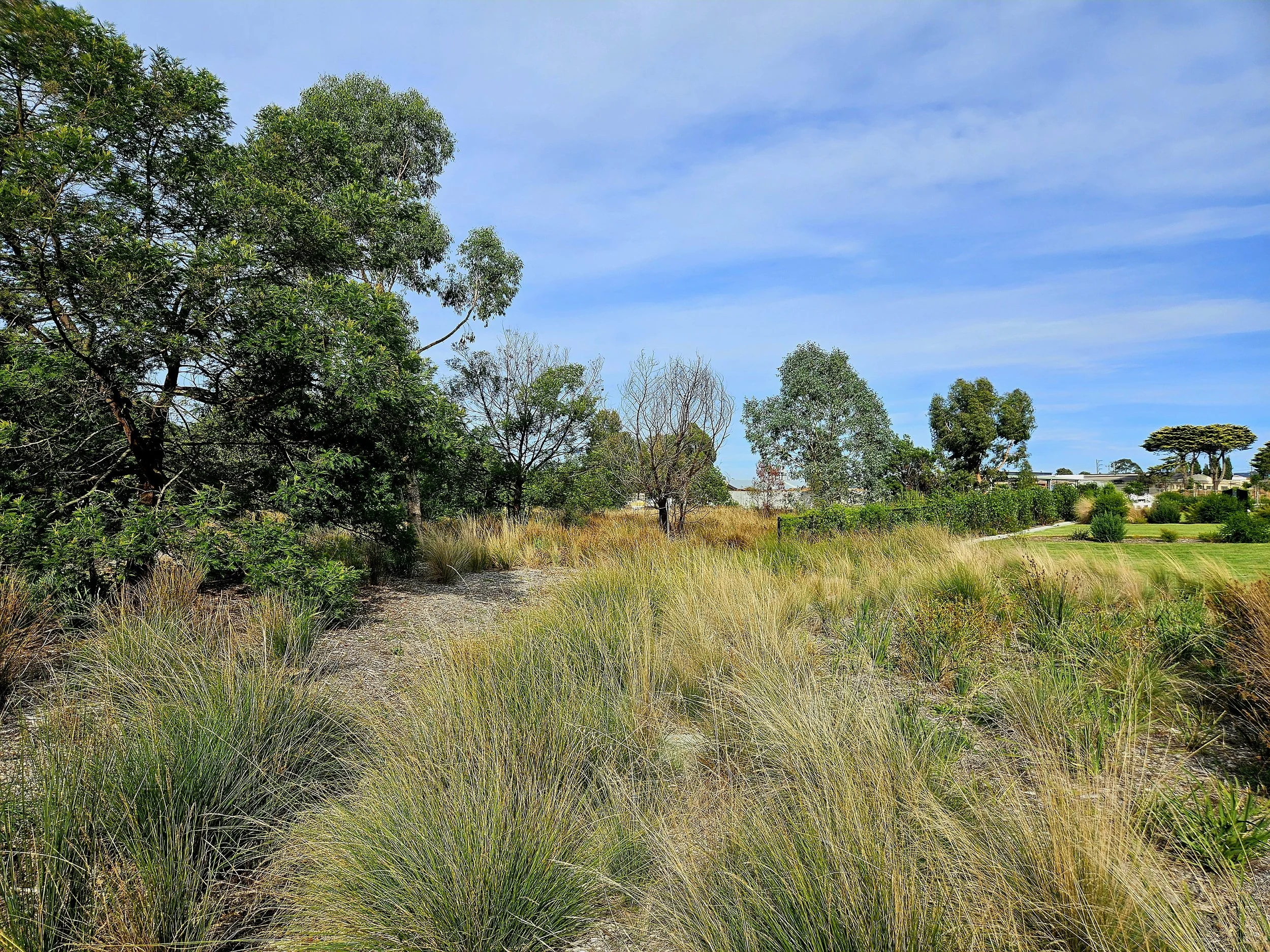
Regenerative Civil Design
Discover our Level 3 approach to civil engineering design that supports a more resilient built environment.
How can a civil engineer contribute to resilient cities?
Today, the typical civil engineering design involves Water Sensitive Urban Design and on-site stormwater detention for each development, aiming to meet legislated minimum standards. While this 1990s-based approach is safe we ask: is this appropriate?
Australian civil infrastructure design, much like early agriculture, was imported from Britain in colonial times. Directing all runoff into drains has been proven to degrade the landscape in agricultural settings – the exact opposite of what the land needs. Regenerative agriculture emerged in the 1980s to address this, demonstrating significant environmental benefits and landscape restoration through natural interventions.
Civil engineering faces the same challenge. In dry urban environments where the heat island effect worsens with every new subdivision, road widening, and rail duplication, civil design continues to degrade the landscape.
Regenerative civil design principles
Taking inspiration from regenerative agriculture, our approach helps restore urban landscapes towards their pre-settlement conditions. By applying a holistic, nature-based approach, we replenish natural resources, improve soil biodiversity, and design systems that work with the environment, not against it. The result is crucial heat and environmental resilience, achieved by storing water in the landscape instead of just draining it away.
-

Permeable surfaces
Allowing water to soak into the ground, reducing runoff and recharging groundwater.
-

Contour berms and swales
Slowing and spreading water across the landscape, promoting infiltration and hydrating the soil.
-

Leaky weirs
Restoring natural hydrological functions in channels to create resilient, healthy waterways.
An ally for the landscape architect
A 'push and pull' dynamic often exists between standard civil design and landscape architecture. While these disciplines should be close collaborators, the relationship is often one of compromise.
Typical civil design prioritises piped drainage and steep slopes. This forces landscape design to work around the engineering, compromising soil health and the original design vision.
We change this dynamic. Regenerative Civil Design actively integrates water into the landscape, creating a superior outcome for both disciplines and the environment. This approach often negates the need for expensive, end-of-line treatment systems.
Our philosophy elevates our thinking beyond standard practice. We move out of the 'silo' and work seamlessly toward a common objective. The Worsley civil engineer becomes a true ally, providing the technical justification and authority compliance needed to make a bold landscape vision a reality.
Benefits for asset owners
Our Regenerative Civil Design approach delivers significant advantages that align with a clients strategic goals while contributing to a more resilient urban environment.
Reduced Lifecycle Costs
Reduces or eliminates expensive underground tanks and filters that demand ongoing maintenance. This translates to lower operational costs and simpler asset management.
Ecological Restoration
Actively hydrates the soil, promoting greener vegetation for longer, reducing fire risk, and improving urban biodiversity. This creates healthier, more valuable public spaces.
Future-Proofed Resilience
Creates assets that are inherently adaptable to climate change. By managing water naturally, we reduce flood risk from intense storms and combat the urban heat island effect.
Meet our expert
Ready to transform your urban landscapes?
We are already working collaboratively with Councils to update standards and are actively applying these transformative principles to new infrastructure designs.


